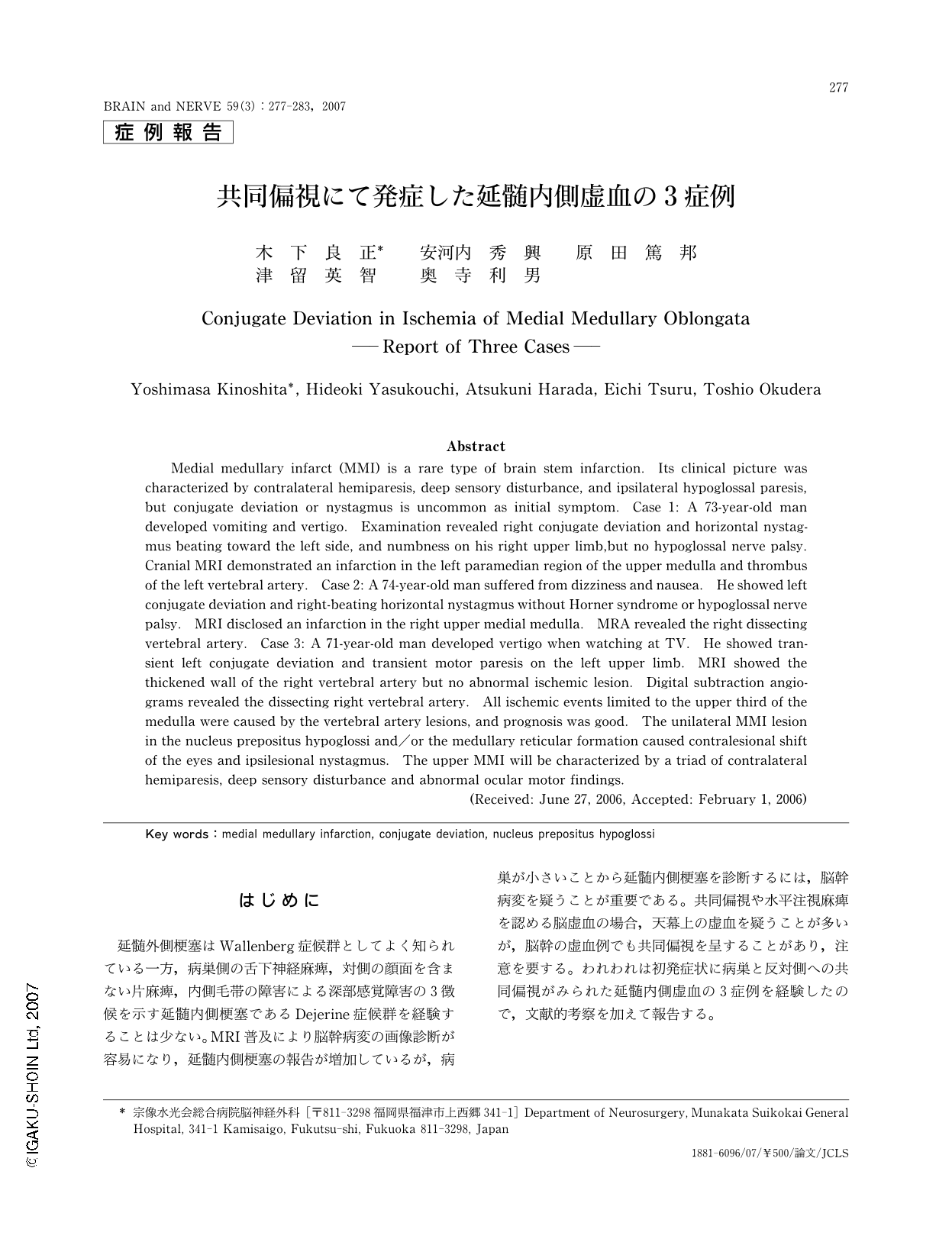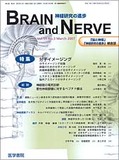Japanese
English
- 有料閲覧
- Abstract 文献概要
- 1ページ目 Look Inside
- 参考文献 Reference
はじめに
延髄外側梗塞はWallenberg症候群としてよく知られている一方,病巣側の舌下神経麻痺,対側の顔面を含まない片麻痺,内側毛帯の障害による深部感覚障害の3徴候を示す延髄内側梗塞であるDejerine症候群を経験することは少ない。MRI普及により脳幹病変の画像診断が容易になり,延髄内側梗塞の報告が増加しているが,病巣が小さいことから延髄内側梗塞を診断するには,脳幹病変を疑うことが重要である。共同偏視や水平注視麻痺を認める脳虚血の場合,天幕上の虚血を疑うことが多いが,脳幹の虚血例でも共同偏視を呈することがあり,注意を要する。われわれは初発症状に病巣と反対側への共同偏視がみられた延髄内側虚血の3症例を経験したので,文献的考察を加えて報告する。
Medial medullary infarct (MMI) is a rare type of brain stem infarction. Its clinical picture was characterized by contralateral hemiparesis, deep sensory disturbance, and ipsilateral hypoglossal paresis, but conjugate deviation or nystagmus is uncommon as initial symptom. Case 1: A 73-year-old man developed vomiting and vertigo. Examination revealed right conjugate deviation and horizontal nystagmus beating toward the left side, and numbness on his right upper limb,but no hypoglossal nerve palsy. Cranial MRI demonstrated an infarction in the left paramedian region of the upper medulla and thrombus of the left vertebral artery. Case 2:A 74-year-old man suffered from dizziness and nausea. He showed left conjugate deviation and right-beating horizontal nystagmus without Horner syndrome or hypoglossal nerve palsy. MRI disclosed an infarction in the right upper medial medulla. MRA revealed the right dissecting vertebral artery. Case 3: A 71-year-old man developed vertigo when watching at TV. He showed transient left conjugate deviation and transient motor paresis on the left upper limb. MRI showed the thickened wall of the right vertebral artery but no abnormal ischemic lesion. Digital subtraction angiograms revealed the dissecting right vertebral artery. All ischemic events limited to the upper third of the medulla were caused by the vertebral artery lesions, and prognosis was good. The unilateral MMI lesion in the nucleus prepositus hypoglossi and/or the medullary reticular formation caused contralesional shift of the eyes and ipsilesional nystagmus. The upper MMI will be characterized by a triad of contralateral hemiparesis, deep sensory disturbance and abnormal ocular motor findings.

Copyright © 2007, Igaku-Shoin Ltd. All rights reserved.


